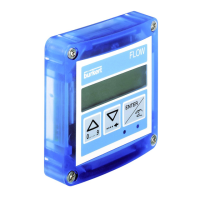How to troubleshoot a Burkert 8025 that is not energized?
- NNancy StoneAug 18, 2025
If your Burkert Transmitter is not energized, there are several things you can check: * First, examine the wiring to ensure it is correctly connected. * Next, inspect the fuse of the installation and replace it if necessary. * Also, verify that the installation hasn't been shut down. * Finally, confirm that the power source is functioning correctly.






